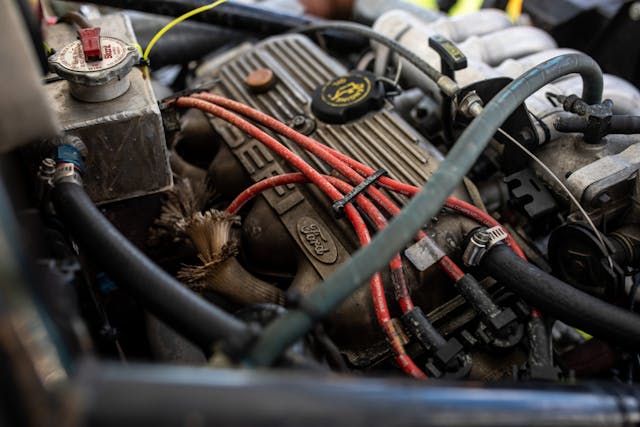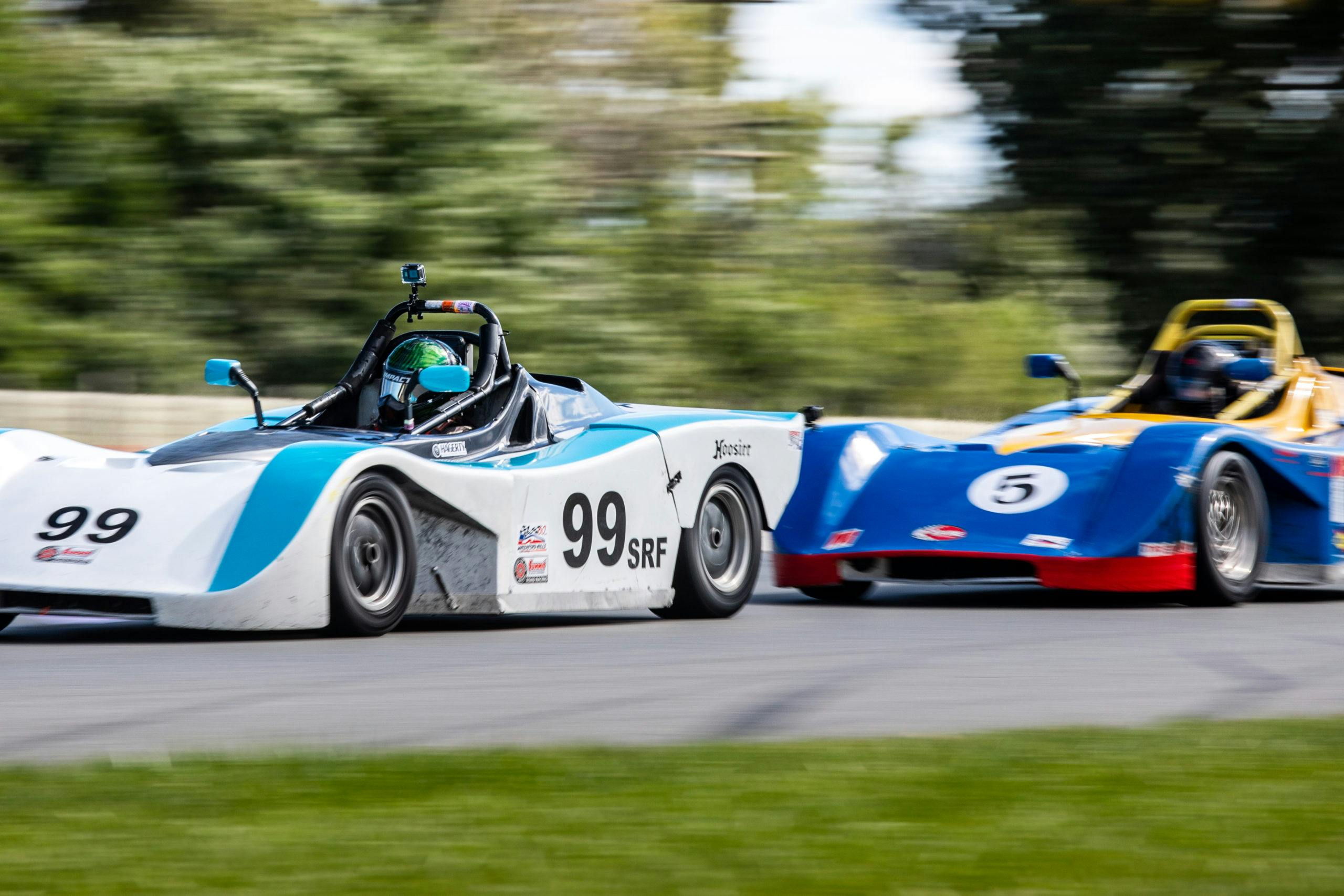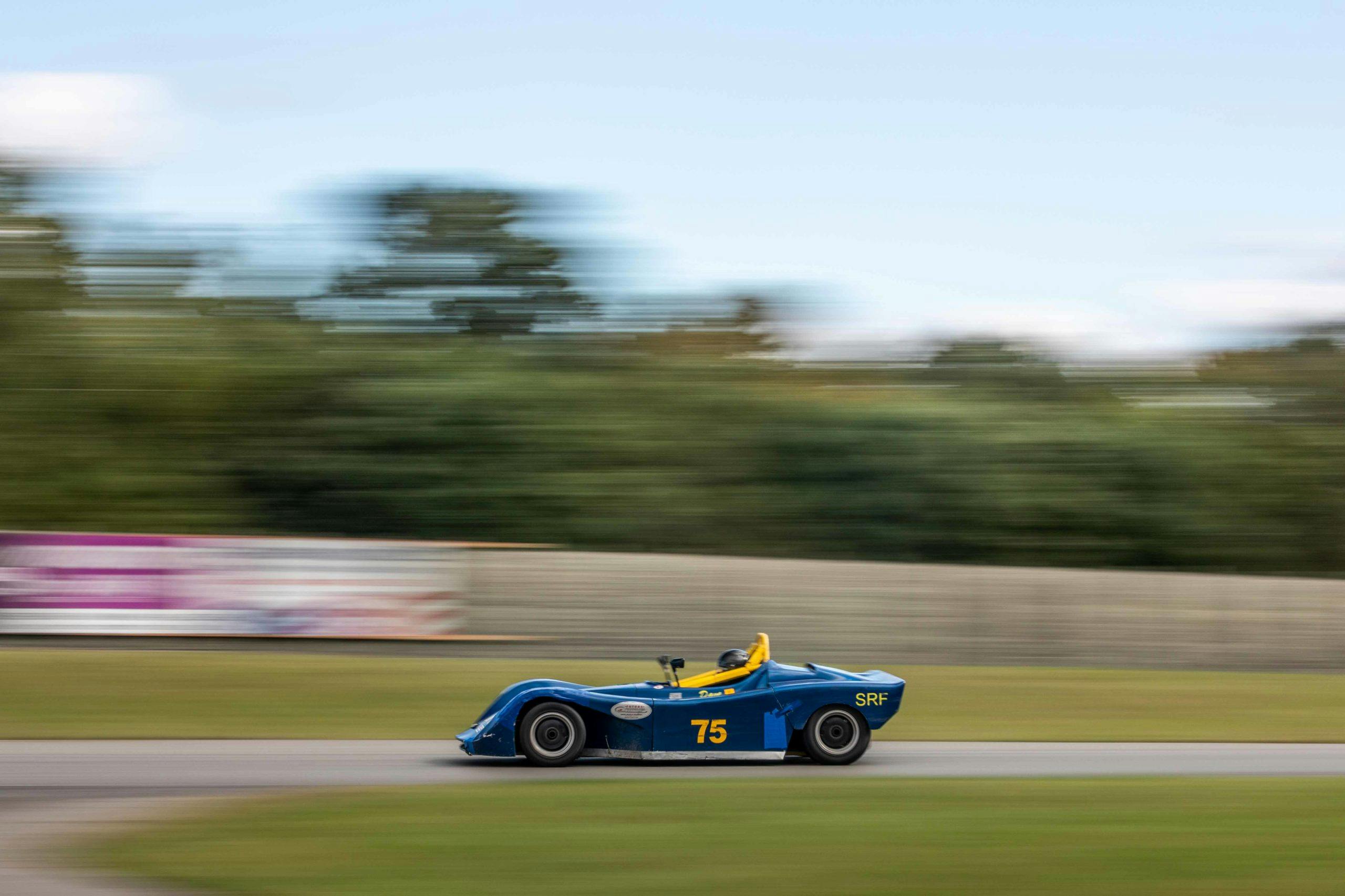Media | Articles
Sport Renault: America’s obscure, purpose-built road racer
There’s a discipline between vintage racing and club racing; a class you won’t find in any competition rules, registration drop-downs, or on many tracks across the country. Despite the ghost-like nature of this class, it actually shares a pedigree with the original Ford GT. It also served as a support series to Formula One back in the day. Meet Sports Renault–the original spec racer, designed with the novel concept of focusing on driver skill, not the driver’s pocketbook.
The class debuted at the 1984 Detroit Grand Prix, but more impressively, each vehicle was priced under $10,000. I’ll save you the math, that’s $25,000 in today’s dollars, for a brand-new race car. You’d be hard-pressed to purchase a refreshed modern racer for that price tag, especially when a new build for a base Spec Miata is pushing 35-grand.
The motor, transmission, and carburetor were sealed to prevent boring, honing, port matching, or tacking on additional go-fast parts. (Since they are carbureted, teams can’t cheat up the ECU either, which is a trend in the paddock nowadays.) There was one choice for tires, suspension and brake pads. The only tweakable component was the suspension set up–camber, caster, toe, ride height, and tire pressure. Money didn’t win races. That was left to the teams and their driver.
This was the birth of modern spec racing as we know it today.
The company behind the new spec-racer was Renault-Jeep Sport from Livonia, Michigan. That’s right, in the early 1980’s, Chrysler didn’t own Jeep. They fell under the Renault flag along with AMC. Renault at that time wasn’t exactly known for award-winning designs, but for this project they appointed one of the best in the business: Roy Lunn.
Marketplace
Buy and sell classics with confidence
Lunn was most known for leading the team of engineers that designed the original GT40 that conquered Le Mans four times. The GT40’s founding father didn’t hold back his passion for spec racer design, despite working on a much tighter budget.
Lunn and his team designed a mid-engine, rear-wheel-drive race car that rode on a semi-tubular chassis. They skinned it with an extremely durable fiberglass three-piece shell that can be repaired in a home garage. The driver sat in the center of the tub, like an F1 car, helmet and shoulders exposed in an open cockpit. Its performance surpassed many production-based racers and its lineage to the GT40 has served as a badge of honor to grassroots racers throughout the years.

Look, I understand the lumpy fiberglass racer is a far cry from the Ferrari-killing GT40. Some people date super models and some people, well, don’t. So long as you have a date for Saturday night, you’re in the game. The same can be said for the modest little Renault, which is capable of pulling over one lateral G and won’t empty the team’s pockets when it comes to service and repair.
It should also be remembered that Renault holds some currency when it comes to performance. Ignore the production cars (Alliance, Encore and Fuego) and focus on their on-track results. Renault holds a formidable number of wins in Formula One, second only to Ferrari.
You may be wondering, then, what magnificent F1 DNA makes up the Sports Renault engine? Short answer: none. Renault-Jeep Sport was aiming for affordability and reliability, so the chosen solution was a 1.7-liter four-banger. Comically, the engine sounds like a tractor. That’s probably because the block was derived from a 1.6-liter diesel engine: the F8M. Despite the funky sound, the motor is grenade-proof. After axing the unnecessary accessories, the engine could produce a front stretch-frying 90 horsepower. Given the 1580-pound spec weight, that’s approximately a 5.7 power-to-weight ratio, which is comparable to a VW Golf, Ford Focus, or Miata in spec trim.
Still underwhelmed? I remember feeling that way, too, the first time I was told that the go-karts at the local concession track were powered by a five-horsepower Briggs and Stratton. My outlook quickly changed after a race with 20 of those karts on-track at the same time. These Sport Renaults have a similar vibe. They may be underpowered, but the equal playing field delivers one intense–and wildly fun–race.
So how did such underpowered machines ever become a support race at F1 races like the Detroit Grand Prix? America’s longest standing racing association, the Sports Car Club of America (SCCA), was in search of a solution to mitigate the excessive costs to race for the weekend warrior. Lunn and Renault already had the platform, so this was a well paired match in the attempt to create a unique racing class that has a high level of participation and a minimal cost. Being closely tied to hundreds of pro and amateur races across the country, the SCCA was able to bend the right ears and get 40 of these machines on track the same weekend’s that the likes of Ayrton Senna and Nelson Piquet were writing racing history.
The plan was a success! Racers traded in their production and open wheel cars and new drivers joined the sport due to its now affordable price range and genuine spirit of competition. The class grew quickly, and 400 vehicles were sold over a three-year period. The SCCA would ship customers a DIY kit, and within a few weeks, racers were ready to go. The team simply supplied the battery and a paint scheme. Races took place coast-to-coast with packed run groups, which made for national fan favorites. The series produced some formidable drivers and was seen as a farming system for top-tier rides.
Sadly, in 1987, Renault exited the American market. Consequently, parts and engines became scarce and the SCCA was forced to search for an alternative to the Renault powerplant. They scoured the states for a manufacturer to take the helm but had no takers.
Eventually, motorsports magnate Jack Roush recognized the potential and opportunity. By 1993 he had drafted and engineered a conversion kit that would transform the engine to a fire breathing dragon, er, dragonfly. Sport Renaults adopted the ECU, wiring harness, and a fully dressed 1.9-liter from the Ford Escort. In turn, horsepower shot to 105. What any of us wouldn’t give for a 17% horsepower gain in our current steeds.

To date, there is no class that can transform a modestly salaried person–or retiree–into an open cockpit racecar driver. The history, provenance and smiles-per-gallon that this platform delivers can’t be found elsewhere, with fields still attracting dozens of wheel-to-wheel racers.
Now that you’re up to speed on Sport Renault’s origins, join us next time to learn what it’s like at the wheel of America’s most successful purpose-built road racer and the evolution into the Ford platform.
Check out the Hagerty Media homepage so you don’t miss a single story, or better yet, bookmark it.




























































Interesting. Looks like fun! I think my homebuilt Lotus 7 with motorcycle carbs on a Ford Zetec might have a better power to weight if only for using the more modern Ford
I got to see these run at the SCCA Runoff’s in, I believe, 1984 at Road Atlanta. It was my first trip to the Runoffs. I remember being at turn 3 for this race and one of the leaders lost his cooling system coming into the turn, resulting in EVERY car behind spinning or dodging spinners. Fiberglass everywhere, rest of the race looked like a NASCAR modified race with the survivors limping around the track. Yes they were not high speed cars, but the racing was close and a lot of action because of the closeness of the cars.